Knowledge of the Arts Etymology: Meanings of the words 'Korea,' and 'Canada' The Role of Canada in Taekwon-Do History The Founder of Taekwon-Do All Groups Have The Right To Exist! Hapkido: The Art of Coordinated Power. Meanings of the Belt Colours The Numbers in Korean (1-10) The Tenets of Taekwon-Do Basic Taekwon-Do Stances Basic Taekwon-Do Blocks Basic Taekwon-Do Kicks Basic Taekwon-Do Hand Parts Basic Hapkido Terms Miscellaneous Terms
Meanings of the Belt Colours: (also, see Belt Ranks) Note: The colors of black, red and blue denoted the various levels of hierarchy during the Koguryo and Silla Dynasties.
Etymology (meanings of the words 'Taekwon-Do,' 'Hapkido,' 'Korea' and 'Canada'):
Taekwon-Do: (pronounced Tay-Kwon-Doe) - The art, the way of life (do) of kicking feet (Tae) and punching fists (Kwon).
Hapkido: (pronounced Hap-Kee-Doe) - The art, the way of life (do) of coordinated (Hap) power (Ki).
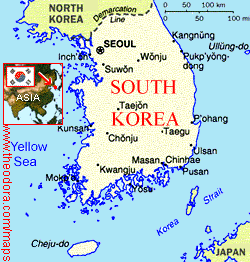
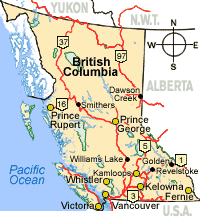
Hapkido. (map courtesy of Theodora Maps) BRITISH COLUMBIA: (above, right) is a
Western-Canadian province located alongside the Pacific Ocean and the United States.
(map courtesy of WestJet Airlines)
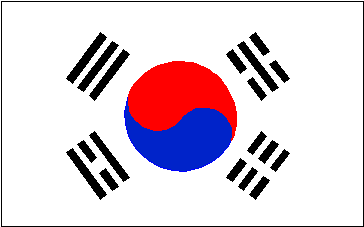 "South Korea": South Korea is known as the Republic of South Korea (R.O.K.). This country is the official birthplace of both Taekwon-Do and Hapkido. The name "Korea" has several meanings, the most popular of these are: "land of the morning calm" and "land of high mountains and sparkling streams."
"South Korea": South Korea is known as the Republic of South Korea (R.O.K.). This country is the official birthplace of both Taekwon-Do and Hapkido. The name "Korea" has several meanings, the most popular of these are: "land of the morning calm" and "land of high mountains and sparkling streams."
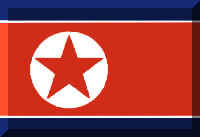 "North Korea:" Also known as the Democratic People's Republic (D.P.R) of Korea, this is the birthplace of the founder of Taekwon-Do, Gen. Choi, Hong Hi. Both North and South Korea are seperate countries and relations between the two governments have (historically) not always been friendly.
"North Korea:" Also known as the Democratic People's Republic (D.P.R) of Korea, this is the birthplace of the founder of Taekwon-Do, Gen. Choi, Hong Hi. Both North and South Korea are seperate countries and relations between the two governments have (historically) not always been friendly.
However, in June of 2000, the presidents of both North and South Korea met for unprecedented and historic talks, which was a very promising development towards the establishment of normal relations between the two countries! The South Korean government has since allowed the establishment of both G.T.F. and I.T.F. schools in South Korea for the first time. Therefore, it could be argued that the art of Taekwon-Do (the national "sport" of Korea) has helped bring these two former "bitter" rivals, together.
For an update on the latest developments in North Korea, click here.
For an update on the latest developments in South Korea, click here.
![]() "Canada": the "Dominion of Canada" is categorized, politically, as a 'parliamentary democracy." The name Canada is "native" in origin and comes from the native (aboriginal) word "Kanada," meaning "a village." Jacques Cartier* first borrowed this native term when referring to the whole country. European map-makers later used "Canada" as the name for all the land north of the St. Laurence River.**
"Canada": the "Dominion of Canada" is categorized, politically, as a 'parliamentary democracy." The name Canada is "native" in origin and comes from the native (aboriginal) word "Kanada," meaning "a village." Jacques Cartier* first borrowed this native term when referring to the whole country. European map-makers later used "Canada" as the name for all the land north of the St. Laurence River.**
* Jacques Cartier (1491-1557) is a well-known French explorer who is credited with being the first European to discover Canada's St. Laurence River and the vast territory we now know as the Province of Quebec. He is also credited with discovering a mountain (which he called Mont Real or Mount Royal) adjacent to the former "indian" village of Donnacona (which the French called "Ville Marie" and was later renamed "Montreal", in honour of Cartier.)
** (source: 'A Look at Canada' by Minister of Public Works and Government Services Canada, 1999.)
The role of Canada in Taekwon-Do History:
It is interesting to note that Canada has played a significant role in both the development and the history of the art of Taekwon-Do. For example, when the late General Choi, Hong Hi (pronounced as "CHAY") left Korea in the 1960's, he settled in Canada and later established the 1st International Taekwon-Do Federation (I.T.F.) headquarters in Montreal, Quebec, in 1966. Canada is also an original "charter" member of the I.T.F., which was the world's first Taekwon-Do governing body. General Choi and his wife are currently residents of Mississauga, Ontario.
In a rare interview with Taekwon-Do Times Magazine (January/2000), General Choi claims he chose to migrate to Canada (from Korea) largely because of Canada's reputation as a politically "neutral" country that doesn't meddle in the affairs of other nations.
Meantime, according to the "Original Martial Arts Encyclopedia (Editor: John Corcoran), the first official "full-time" Taekwon-Do school in Canada was established in Montreal, Quebec by Grandmaster Chong Lee in the middle or late 1960's.
G.T.F. founder Grandmaster Park Jung Tae was another early pioneer of Taekwon-Do in Canada, establishing the Manitoba Taekwon-Do Assocation in 1972.
A Brief History of Taekwon-Do:
Founder of Taekwon-Do: According to the Encyclopedia: Taekwon-Do: The Korean Art of Self-Defence',
Taekwon-Do (also spelled 'TaeKwon-Do,' 'Tae Kwon Do') first evolved out of the Korean Armed Forces in 1946. The founder of the art of Taekwon-Do is universally recognized as the late General Choi, Hong Hi, (1917 - 2004) who was a 'two-star' general and founding member of South Korea's Armed Forces.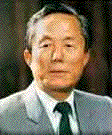 Choi is quoted on his Taekwon-Do CD-Legacy Series as saying the reason Taekwon-Do spread so dominantly throughout the world was because he held an important rank within the Korean Army and that he later served as Korea's Ambassador to Malaysia (1961-62). Choi adds because of his influence as a 'V.I.P.', the art of Taekwon-Do was spread quickly because he got better access to the leaders of various world governments than perhaps a lesser-known civilian would. Few historians today (even among the W.T.F. or Kukkiwon) could deny that Choi has played an important role in shaping Taekwon-Do's history.
Choi is quoted on his Taekwon-Do CD-Legacy Series as saying the reason Taekwon-Do spread so dominantly throughout the world was because he held an important rank within the Korean Army and that he later served as Korea's Ambassador to Malaysia (1961-62). Choi adds because of his influence as a 'V.I.P.', the art of Taekwon-Do was spread quickly because he got better access to the leaders of various world governments than perhaps a lesser-known civilian would. Few historians today (even among the W.T.F. or Kukkiwon) could deny that Choi has played an important role in shaping Taekwon-Do's history.
The name Taekwon-Do was introduced by Choi at the now historic 'meeting of the kwans' on April 11, 1955, in Seoul, Korea. Choi later was elected president of the Korea Taekwon-Do Association, which attempted to unify all the various Korean martial art styles under the name 'Taekwon-Do.' However, not all Korean Masters agreed to cooperate with Choi, including Master Hwang Kee a Korean Tang-Soo-Do instructor.
Choi later re-located to Canada, citing 'interference' from the South Korean Government in being able to exercise his duties as an organizer. He formed his own association - the International Taekwon-Do Federation (I.T.F.) in 1966. Basically, at one point in time, every Taekwon-Do student trained in I.T.F. (under General Choi). However, in 1972, the South Korean government appointed Dr. Un Yong Kim to establish a 'rival' organisation to the I.T.F., specifically the World Taekwon-Do Federation (or "W.T.F."). When the W.T.F. came into existence, the I.T.F. had to turn to the government of North Korea for financial support, which has created some complex and bitter "politics" between the two organisations (since North and South Korea, as mentioned, have not historically gotten along).
However, since June of 2000, there has been a 'thawing' in relations between the South Korean Government and I.T.F. and merger talks between I.T.F. and W.T.F. have been ongoing for quite some time. Nobody really can say what the next step is, however, an improvement in Korean relations (after nearly 50 years of strife) must be considered a blessing by all concerned parties.
All groups have the 'right' to exist !
We've noticed that nearly every major Taekwon-Do association in the world, today, claims that their style of martial art is 'better' than others. In some cases, some high-ranking instructors have become, indeed, very self-righteous and egotistical about it, boasting on their websites that only their style is valid, therefore, others must be 'imitators' (or even fraudulent?)
We believe that all martial art groups are valid and all styles (even outside of Taekwon-Do and Hapkido) are equally valid. The problem is, who can the general public believe, anymore ? And why should we trust any particular person or leader, when most martial art leaders from around the world have very limited people or communication skills and subscribe to the 'North American dream,' which is: a) to become as independantly 'rich' or wealthy as possible and b) 'to screw unto others.'
Meanwhile, many North Americans are led to believe that the 'bigger' the organization, the better or more successful, the group ?
In our opinion, 'strength in numbers' can be both false and misleading, as both large and small organizations can be equally successful (or equally problematic?). As an example, during the Vietnam War (1964-197X?), the North Vietnamese Forces were both "out-numbered" and "out-matched" in weaponry and in size of ground troops by the American Forces by almost 3 to 1 and yet, the United States (and its' ally, South Vietnam) eventually lost that war. Why?
This concept of a 'smaller' force defeating a larger and more powerful one, is the principle behind many of the 'yin' style martial arts, including Hapkido, Aikido, Judo, Ju-Jitsu and others. In the case of the Vietnam War, the United States was (and still is!) a very powerful country with many resources. But, if a "big man" misjudges his capabilities, he could, indeed, be defeated by a smaller entity with less resources.
Like individual students, all Hapkido and Taekwon-Do organizations have their strong points and weaknesses. In most cases, finding the right association is a question of personal choice and also, finding an instructor you feel comfortable with. Having said that 'birds of a feather, indeed, stick together'. In other words, if you have something in common (or share similar values) with the "leader" of the group (or other members within the group) chances are it's going to be a significant - and successful - relationship. On the other hand, those with little in common with a group can still achieve success (within a group), provided they respect the goals and rules of that group.
My previous instructor once told me that the 'leader' of any group must be consistently bright, similar to that of a light bulb, hanging overhead. 'A good light bulb (like a good leader) must always be bright and constant - it should never flicker.' A light bulb that flickers may cause "doubts" among the occupants of the room. Similarly, the leader who provides a steady stream of light (like a light bulb) is rarely questioned, partly because that is the role most people expect from their illuminating source (or leader ?).
Hapkido - the art of coordinated power
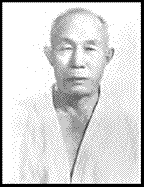 Founder of Hapkido: The founder of the art of Hapkido is not as clear. Many historians recognize the man on your left (Grandmaster Choi Yong Sul) as the "true" founder of Hapkido. However, a student of Choi Yong Sul (a Korean man named Ji, Han Jae) claims that he founded Hapkido. In 1999, this web-master had an interview with Master Park, H.S. of Calgary, Alberta, who claims to be an "original" student of Master Choi, Yong Sul. According to Master Park, Master Choi Yong Sul should be recognized as the founder of Hapkido, and not Ji Han Jae. We believe many Hapkido masters (now living in Canada and the United States) would agree with the statement made by Master Park, H.S. Meanwhile, according to American Hapkido Master Harold Whelan, Master Choi Yong Sul first developed Hapkido in the late
1940's but it originally wasn't called "Hapkido," until Master Ji Han Jae coined the term, thus Master Jae should be given credit, as such.
Founder of Hapkido: The founder of the art of Hapkido is not as clear. Many historians recognize the man on your left (Grandmaster Choi Yong Sul) as the "true" founder of Hapkido. However, a student of Choi Yong Sul (a Korean man named Ji, Han Jae) claims that he founded Hapkido. In 1999, this web-master had an interview with Master Park, H.S. of Calgary, Alberta, who claims to be an "original" student of Master Choi, Yong Sul. According to Master Park, Master Choi Yong Sul should be recognized as the founder of Hapkido, and not Ji Han Jae. We believe many Hapkido masters (now living in Canada and the United States) would agree with the statement made by Master Park, H.S. Meanwhile, according to American Hapkido Master Harold Whelan, Master Choi Yong Sul first developed Hapkido in the late
1940's but it originally wasn't called "Hapkido," until Master Ji Han Jae coined the term, thus Master Jae should be given credit, as such.
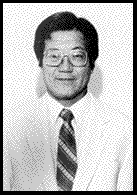 Master Shaw (an 8th Dan Black-Belt in Hapkido and well-known martial arts historian with a Ph.D. in Asian Studies) explains on his web-site that when Hapkido was initially taught by Choi Yong Sul, it was very similar to Aikido (i.e. a lot of breakfalling, pressure points, joint locks, emphasis on ki, etc., but little or no kicking techniques.) However, through Grandmaster Jae's influence, the art became more influenced by Korean arts like Taekwon-Do and Taekyon and people started to throw more spinning and jumping kicks and kicks/punches to the head. Hence, Hapkido got 'energized' and became more dynamic (and certainly more eclectic) through Ji Han Jae's influence. Meanwhile, today, there are two basic 'schools' of Hapkido; One is the 'softer' Aikido 'style' (as taught by the founder); the other is the dynamic, aggressive 'kicking-style' as developed by Ji Han Jae, Bong Soo Han, and other Masters.
Master Shaw (an 8th Dan Black-Belt in Hapkido and well-known martial arts historian with a Ph.D. in Asian Studies) explains on his web-site that when Hapkido was initially taught by Choi Yong Sul, it was very similar to Aikido (i.e. a lot of breakfalling, pressure points, joint locks, emphasis on ki, etc., but little or no kicking techniques.) However, through Grandmaster Jae's influence, the art became more influenced by Korean arts like Taekwon-Do and Taekyon and people started to throw more spinning and jumping kicks and kicks/punches to the head. Hence, Hapkido got 'energized' and became more dynamic (and certainly more eclectic) through Ji Han Jae's influence. Meanwhile, today, there are two basic 'schools' of Hapkido; One is the 'softer' Aikido 'style' (as taught by the founder); the other is the dynamic, aggressive 'kicking-style' as developed by Ji Han Jae, Bong Soo Han, and other Masters.
We encourage all martial arts to investigate Hapkido and learn better self-defence skills.
Hapkido's development in Canada
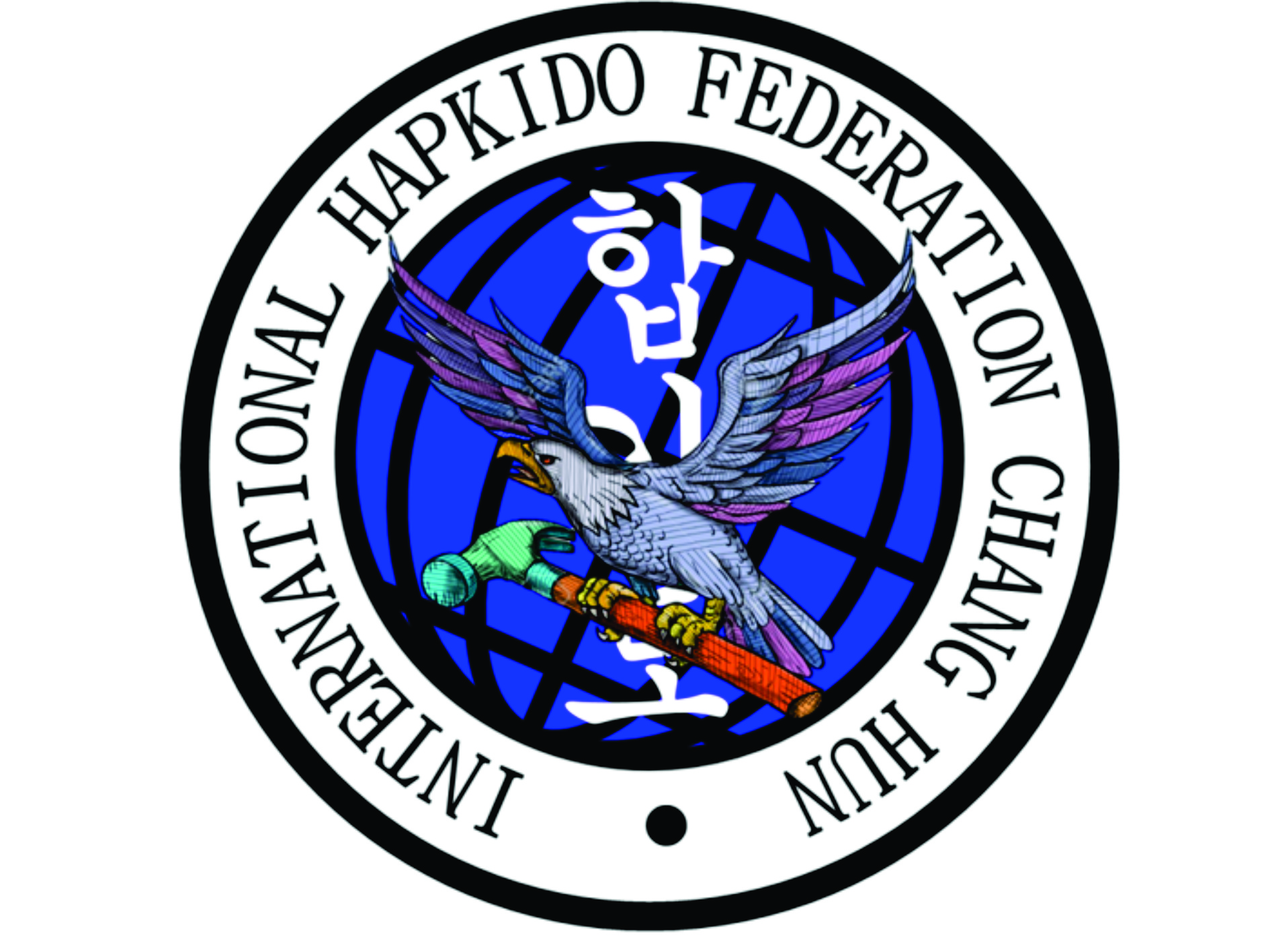
Grandmaster Song is the pioneer of Hapkido in British Columbia, opening up the first dojang on Hastings Street, above Mikado Enterprises in Vancouver, B.C. in the 1970's.
Grandmaster H.S. (David) Park was the pioneer of Hapkido in the Province of Alberta, circa 1976. Calgary was the site of his first dojang.
In Ontario, Grandmaster Wang In Shik was one of the pioneers of Hapkido in the Toronto, Ontario region. His relationship with Toronto goes back three decades or more.
The Kel-West Society of Martial Arts is a proud charter member of the International Hapkido Federation Chang Hun here in British Columbia, Canada, and headed by Argentine Hapkido Grandmaster Augustin Escobar, 9th Dan. Master Smith is a 7th Dan student of GM Escobar. Kel-West was also the first recognized traditional Hapkido club in the Okanagan and in B.C.'s interior, circa 1995. We held the first traditional Hapkido seminar in Kelowna sponsored by Grandmaster Tae Jung back in 2004.
In 2005, Kel-West Society of Martial Arts hosted a "Pro Hapkido" sparring tournament in West Kelowna, the first of its kind in British Columbia and possibly, in all of Canada.
Belt Colour
Interpretation
WHITE
Signifies INNOCENCE, as that of a beginner student with no previous knowledge of Taekwon-Do.
YELLOW
Signifies the EARTH from which a plant sprouts and takes root, as the Taekwon-Do foundation is being laid.
Signifies the PLANT'S GROWTH, as the Taekwon-Do skill begins to develop.
BLUE
Signifies the HEAVEN, towards which the plant matures into a towering tree, as training in Taekwon-Do progresses.
RED
Signifies DANGER, cautioning the student to exercise self-control and warning the opponent to stay away.
BLACK
Opposite of WHITE, therefore signifying maturity and proficiency in Taekwon-Do. It also indicates the wearer's imperviousness to darkness and fear.
A half-black and half-white belt is used for the junior black-belt holder. According to an article in the February, 2000,
edition of Taekwon-Do Times Magazine, the color "blue" was recommended as a rank color by Master Nam Tae Hi,
a former student and army colleague of General Choi during the 1950's.